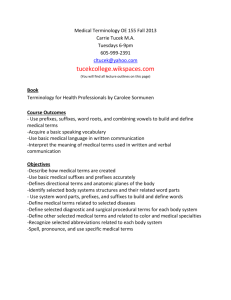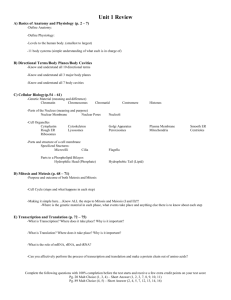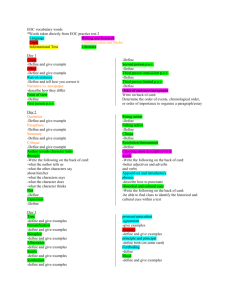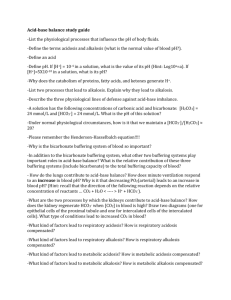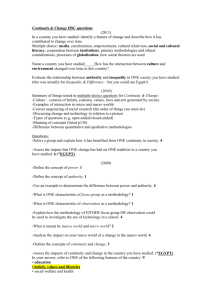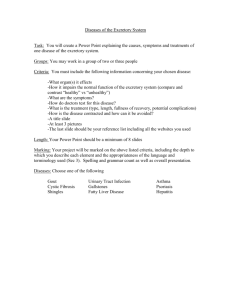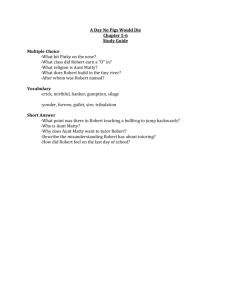Biology Chemistry of Life – Basic Chemistry CHAPTER 2
advertisement
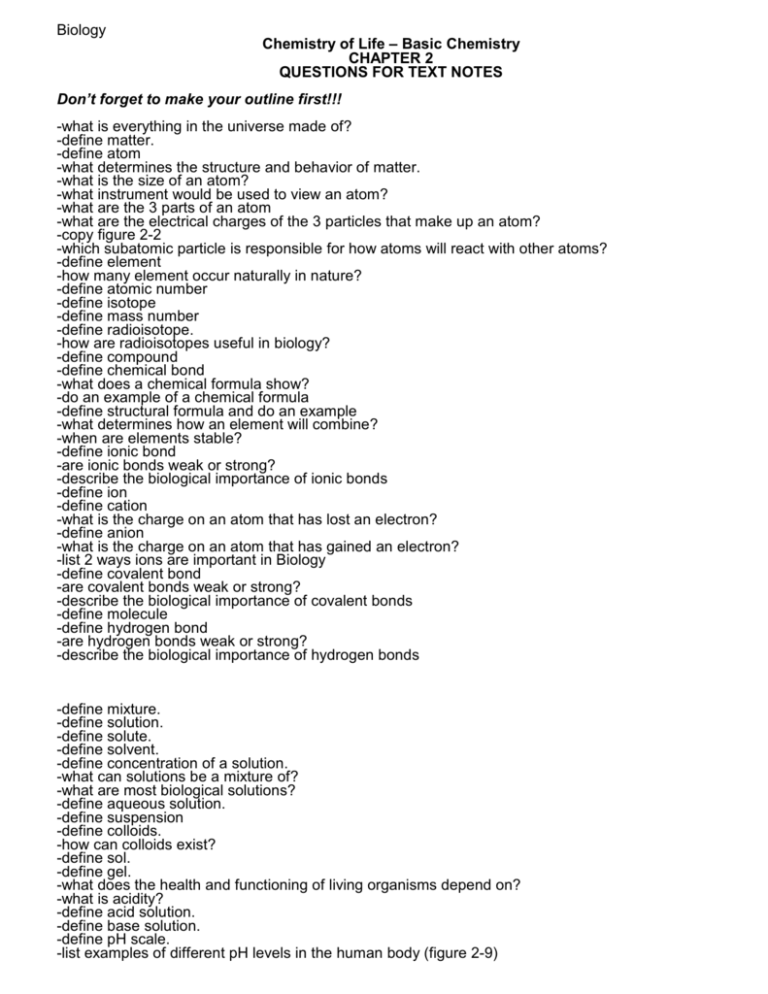
Biology Chemistry of Life – Basic Chemistry CHAPTER 2 QUESTIONS FOR TEXT NOTES Don’t forget to make your outline first!!! -what is everything in the universe made of? -define matter. -define atom -what determines the structure and behavior of matter. -what is the size of an atom? -what instrument would be used to view an atom? -what are the 3 parts of an atom -what are the electrical charges of the 3 particles that make up an atom? -copy figure 2-2 -which subatomic particle is responsible for how atoms will react with other atoms? -define element -how many element occur naturally in nature? -define atomic number -define isotope -define mass number -define radioisotope. -how are radioisotopes useful in biology? -define compound -define chemical bond -what does a chemical formula show? -do an example of a chemical formula -define structural formula and do an example -what determines how an element will combine? -when are elements stable? -define ionic bond -are ionic bonds weak or strong? -describe the biological importance of ionic bonds -define ion -define cation -what is the charge on an atom that has lost an electron? -define anion -what is the charge on an atom that has gained an electron? -list 2 ways ions are important in Biology -define covalent bond -are covalent bonds weak or strong? -describe the biological importance of covalent bonds -define molecule -define hydrogen bond -are hydrogen bonds weak or strong? -describe the biological importance of hydrogen bonds -define mixture. -define solution. -define solute. -define solvent. -define concentration of a solution. -what can solutions be a mixture of? -what are most biological solutions? -define aqueous solution. -define suspension -define colloids. -how can colloids exist? -define sol. -define gel. -what does the health and functioning of living organisms depend on? -what is acidity? -define acid solution. -define base solution. -define pH scale. -list examples of different pH levels in the human body (figure 2-9) -define chemical reaction. -what happens when bonds are broken? -what happens when bonds are formed? -define chemical equation. -define reactant -define product -what does the arrow in a chemical equation point to -give and example of a chemical equation and identify the reactants and product/s -what does it mean when there are two arrows going in both directions.
